Have you ever wondered how to achieve clean and precise cuts when working with laminate flooring? If you’ve ever tackled a DIY flooring project or are considering one, properly cutting laminate flooring cannot be overstated.
In this comprehensive guide on cutting laminate flooring, we will delve into the world of laminate flooring, explore the best tools for the job, and provide step-by-step instructions on achieving flawless cuts using a handsaw, crosscut/table saw, and jigsaw.
So, let’s get started and unlock the secrets to achieving clean and precise cuts when cutting laminate flooring.
What is Laminate Flooring?
Before we delve into the specifics of cutting laminate flooring, let’s take a moment to grasp the essence of this remarkable material. Laminate flooring is a synthetic type designed to mimic the natural appearance of materials like hardwood or stone. It comprises multiple layers, including a decorative layer, a core layer, and a wear layer, which collectively offer durability, affordability, and ease of installation.
Renowned for its versatility and a vast array of design options, laminate flooring has become popular among homeowners and DIY enthusiasts.
Is it Hard to Cut Laminate Flooring?
Fortunately, cutting laminate flooring is not as daunting as it may initially seem. With the right tools, techniques, and patience, achieving precise cuts becomes manageable. The key lies in selecting the appropriate cutting method for your specific requirements and ensuring you have the necessary tools. Let’s explore the finest saws and tools for effectively cutting laminate flooring.
The Best Saw for Laminate Flooring
- Handsaw: A handsaw is a versatile tool for cutting laminate flooring, particularly when dealing with smaller sections or intricate patterns. Equipped with a fine-toothed blade designed for precision, the handsaw allows you to make accurate cuts. Its portability and user-friendly nature make it an indispensable tool for any DIYer.
- Crosscut/Table Saw: The crosscut or table saw takes center stage regarding larger cutting tasks and straight cuts. These power tools offer stability, control, and the ability to achieve accurate cuts swiftly. With adjustable blades and fences, crosscut or table saws enable consistent and repeatable cuts, ensuring a professional-grade finish.
- Jigsaw: The jigsaw is your ultimate companion for curved cuts or when working around obstacles like pipes or irregular shapes. Armed with a thin, reciprocating blade, this tool provides the maneuverability and versatility to tackle intricate and non-linear cuts with finesse.
Tools for Cutting Laminate Flooring
In addition to the saws above, several other tools are invaluable for cutting laminate flooring. These tools contribute to maintaining accuracy, stability, and a flawless finish:
- Straight Edge/Ruler: A straight edge or ruler is critical in marking straight lines on the laminate flooring before making the cuts. By serving as a reliable guide, it enables you to achieve precise cuts while ensuring consistency throughout your project.
- Pencil: A sharp pencil marks cutting lines on the laminate flooring. Creating clear and highly visible marks is a reliable reference point throughout the cutting process.
- Clamp/Vise: A clamp or vise is an invaluable ally to secure the laminate flooring in place during cutting. Its role is to prevent unwanted movement or shifting of the material, facilitating more accurate and controlled cuts.
- Sandpaper: After cutting the laminate flooring, the final touch lies in using sandpaper to smooth any rough edges or imperfections. This step ensures seamless integration between the cut section and the rest of the flooring, elevating the overall aesthetics of your project.
How to Use a Handsaw to Cut Laminate Floors
When employing a handsaw to cutting laminate flooring, adhering to a systematic approach is essential to achieving accurate and clean cuts. For best results, adhere to the steps below:
- Measure and Mark: Measure where the laminate flooring needs to be cut and transfer the measurements onto the plank. Employ a straight edge or ruler to draw a clear-cutting line using a pencil.
- Secure the Plank: Place the plank on a stable surface and fasten it securely with a clamp or vise. This measure ensures that the plank remains steady and avoids unwanted movement during cutting, ultimately leading to a clean cut.
- Commence Cutting: Firmly grasp the handsaw and align it with the marked cutting line. Applying consistent pressure, employ long and smooth strokes to cut through the laminate flooring. Take time, allowing the saw to do the work while avoiding sudden jerks or erratic movements.
- Smooth the Edges: Use sandpaper to smoothen any rough edges or splinters when completing the cut. This meticulous step guarantees a seamless transition between the cut section and the remaining flooring, enhancing the overall visual appeal.
How to Use a Crosscut or Table Saw to Cut Laminate Flooring
A crosscut or table saw is your tool of choice for precise and efficient cuts. Follow these steps for optimal results in cutting laminate flooring:
- Measure and Mark: Begin by measuring the required dimensions on the laminate flooring plank, marking the cutting line with a pencil and a straight edge. Ensure that the line is visible and aligned with your measurements.
- Set Up the Saw: Adjust the blade height of the saw to match the thickness of the laminate flooring. Employ the saw’s fence to align the cutting line with the blade, guaranteeing accuracy and consistency.
- Secure the Plank: Position the laminate flooring plank on the saw table, aligning the cutting line with the blade. Utilize the saw’s clamp or vise to hold the plank in place firmly.
- Execute the Cut: Switch on the saw and gently guide the laminate flooring plank through the blade, maintaining a steady and controlled motion. Allow the saw to cut while you guide the plank along the cutting line. Exercise caution, ensuring your hands remain safely away from the blade.
- Smooth the Edges: As with any cutting method, utilize sandpaper to refine any rough edges or imperfections left behind after the cut. This final touch ensures a polished finish and seamless integration with the rest of the flooring.
How to Cut Laminate Flooring with a Jigsaw
The jigsaw rises to the occasion when confronted with curved cuts or irregular shapes. Follow these steps for successful cuts:
- Measure and Mark: Begin by measuring the area on the laminate flooring plank that requires cutting and mark it clearly with a pencil. Employ a template or compass to trace the desired shape onto the plank for curved cuts.
- Secure the Plank: Place the laminate flooring plank on a stable surface and fasten it securely with a clamp or vise. This ensures the plank remains steady and minimizes unwanted vibrations during the cutting process.
- Select the Appropriate Blade: Choose a fine-toothed blade for cutting laminate flooring. Attach the blade securely to the jigsaw, ensuring a tight fit.
- Initiate the Cut: Position the jigsaw at the edge of the marked cutting line and power it on. Follow the traced shape for curved cuts by guiding the jigsaw along the cutting line. Allow the saw to cut while maintaining control and a steady hand.
- Smooth the Edges: Use sandpaper to smooth any rough edges or imperfections after completing the cut. This final touch guarantees a polished finish and seamless integration with the rest of the flooring.
Conclusion
Cutting laminate flooring is a skill any DIY enthusiast can master with the right tools, techniques, and practice. By understanding the best saws for the task and equipping yourself with the necessary tools like a straight edge, pencil, clamp, and sandpaper, you can achieve clean and precise cuts that will enhance the overall appearance of your flooring project.
With the knowledge and skills gained from this comprehensive guide on cutting laminate flooring, you can confidently tackle your project, ensuring flawless cuts that will transform your space. So, roll up your sleeves, gather your tools, and embark on your flooring project with the expertise to achieve clean and precise cuts when cutting laminate flooring. Happy cutting!
FAQs
What cutting device is ideal for laminate flooring?
The best tool depends on the cut you need. A handsaw is ideal for intricate cuts, while a crosscut or table saw is best for straight cuts. For curves and irregular shapes, a jigsaw is recommended.
Can you cut laminate flooring after installation?
Yes, but it’s more challenging and may not yield clean results. Planning and measuring carefully before installation is best to minimize post-installation cuts.
What is the best way to cut laminate flooring lengthwise?
Use a table or circular saw with a fine-toothed blade for laminate flooring. Measure accurately, secure the plank, and steadily guide it through the saw.
Can I cut laminate flooring with a circular saw?
Yes, as long as you use a fine-toothed blade designed for laminate flooring. Secure the plank and follow safety guidelines when operating the circular saw.


